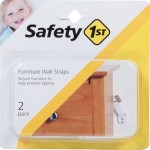```html
How To Keep Stray Cats Off Patio Furniture
Maintaining pristine patio furniture requires diligence, especially when dealing with unwelcome attention from stray cats. These felines, often driven by instinct and the search for comfortable resting places, can pose a significant challenge to homeowners seeking to preserve their outdoor living spaces. Scratching, shedding, and potential urination or defecation can damage or soil furniture, leading to costly cleaning or even replacement. Effective strategies for deterring stray cats from using patio furniture involve understanding feline behavior and employing a combination of deterrents to make the area less attractive.
Understanding Feline Behavior and Motivations
Successfully deterring stray cats starts with understanding their motivations. Cats often seek out elevated positions to survey their surroundings, providing a sense of security and control. Patio furniture, with its height and generally comfortable surfaces, can be particularly appealing. Furthermore, cats mark their territory through scent glands located in their paws, cheeks, and flanks. Scratching furniture serves not only to sharpen claws but also to deposit scent markers, signaling ownership to other cats. Understanding these underlying needs allows for the implementation of targeted deterrents that address the root causes of the behavior.
Temperature also plays a critical role. Cats seek out warm surfaces during cooler periods and shady spots during hot weather. Patio furniture, especially that made of absorbent materials, can retain heat or provide shade, making it an attractive resting place regardless of territory marking.
Finally, the presence of food scraps or other tempting smells in the patio area can further attract stray cats. Addressing these attractants can greatly reduce the problem.
Implementing Practical Deterrents
A multi-pronged approach is often the most effective way to keep stray cats off patio furniture. This may involve using physical barriers, scent deterrents, sonic devices, and addressing food sources.
Physical Barriers: Covering patio furniture when not in use is a simple but effective method. Waterproof covers prevent cats from accessing the furniture's surface, eliminating the opportunity for scratching and marking. These covers also protect the furniture from weather damage, extending its lifespan.
Strategic placement of objects can also create physical barriers. Placing prickly plants, such as rose bushes or thorny shrubs, around the perimeter of the patio can deter cats from entering the area. Similarly, arranging patio furniture in a way that minimizes open spaces and limits access points can reduce its appeal to cats seeking easy access.
Scent Deterrents: Cats possess a highly developed sense of smell, making scent-based deterrents a viable option. Certain scents are naturally repulsive to cats, while others can be strategically used to mask the scents that attract them.
Citrus scents are widely known to deter cats. Placing orange peels, lemon peels, or grapefruit peels around the patio furniture can discourage them from approaching. A diluted citrus spray, made by mixing citrus essential oils with water, can also be applied directly to the furniture, testing a small, inconspicuous area first to ensure it doesn't damage the material.
Other scents that cats generally dislike include lavender, rosemary, and rue. Planting these herbs near the patio or using essential oils diffused in the area can create an unpleasant environment for cats. Caution should be exercised, however, as essential oils can be toxic to cats if ingested directly. Ensure that the oils are diluted properly and not accessible for direct consumption.
Commercial cat repellent sprays are also available. These sprays typically contain a blend of natural ingredients that cats find offensive. It is crucial to choose a product specifically designed for outdoor use and to follow the manufacturer's instructions carefully. Regular reapplication is necessary, especially after rain or heavy dew.
Sonic Deterrents: Ultrasonic devices emit high-frequency sounds that are inaudible to humans but unpleasant to cats. These devices can be placed near the patio furniture to deter cats from approaching. The effectiveness of ultrasonic devices can vary depending on the model and the individual cat's sensitivity. Placement is crucial, as the sound waves can be blocked by objects. Experimenting with different locations to find the optimal range is recommended.
Motion-Activated Sprinklers: Motion-activated sprinklers are another effective option. When a cat enters the detection range, the sprinkler emits a short burst of water, startling the animal and deterring it from returning. These sprinklers can be strategically positioned to protect specific areas of the patio furniture. Adjustment of sensitivity and spray range may be required to avoid unintentionally spraying people or other objects.
Addressing Food Sources: One of the primary reasons stray cats frequent residential areas is the availability of food. Pet food left outdoors, uncovered garbage cans, and even spilled birdseed can attract cats. Securely storing pet food indoors and using garbage cans with tight-fitting lids are essential steps. Cleaning up any food scraps or spilled liquids on the patio can also reduce the attractiveness of the area to stray cats.
If neighbors are feeding stray cats, respectfully discussing the issue with them may be necessary. Educating them about the potential problems associated with feeding strays, such as overpopulation and disease transmission, can encourage them to adopt responsible feeding practices or consider alternatives such as trap-neuter-release programs.
Creating an Alternative Space for Cats
Instead of simply deterring cats from the patio furniture, consider providing an alternative space where they can comfortably rest. This can redirect their attention away from the furniture while still allowing them to feel safe and secure.
A simple cat shelter can be constructed from a plastic storage container or purchased from a pet supply store. The shelter should be weatherproof, insulated, and placed in a sheltered location, such as under a bush or against a wall. Providing soft bedding, such as blankets or straw, will make the shelter more appealing.
A scratching post or a cat tree can provide cats with an appropriate outlet for their scratching behavior. These items can be placed near the cat shelter or in another area of the yard that is accessible to cats. Regular maintenance of the scratching post, such as replacing worn-out sections, will ensure that it remains an attractive alternative to the patio furniture.
Catnip can be used to attract cats to the designated area. Sprinkling catnip on the scratching post or in the cat shelter can encourage cats to explore and use these items. However, overusing catnip can desensitize cats to its effects, so it should be used sparingly.
Providing a water source is also essential, especially during hot weather. A shallow dish of water can be placed near the cat shelter or in another accessible location. Regularly cleaning the dish and refilling it with fresh water will help to attract cats and prevent them from becoming dehydrated.
Maintaining a Cat-Unfriendly Environment
Consistency is key to successfully keeping stray cats off patio furniture. Regularly implementing the chosen deterrent strategies and maintaining a clean and cat-unfriendly environment will maximize their effectiveness.
Regularly clean the patio furniture to remove any cat urine or feces. Use an enzymatic cleaner specifically designed for pet odors, as these cleaners break down the organic compounds that cause the odor and prevent cats from returning to mark the area again. Simple soap and water may not be effective at removing all of the odor.
Inspect the patio area regularly for signs of cat activity, such as scratches, droppings, or urine stains. Addressing these issues promptly will prevent the problem from escalating and discourage cats from returning. Repairing any damage to the patio furniture, such as torn cushions or frayed fabric, will also make it less appealing to cats.
Reapply scent deterrents regularly, especially after rain or heavy dew. Replace citrus peels, replenish essential oil diffusers, and reapply commercial cat repellent sprays as needed. Check the batteries in ultrasonic devices and motion-activated sprinklers to ensure that they are functioning properly.
Monitor the surrounding area for potential attractants, such as food scraps, garbage, or bird feeders. Promptly address these issues to minimize the attractiveness of the area to stray cats. Encourage neighbors to do the same to create a cat-unfriendly environment throughout the neighborhood.
By understanding feline behavior, implementing practical deterrents, and maintaining a consistent approach, it is possible to successfully keep stray cats off patio furniture and enjoy a clean and comfortable outdoor living space.
```
How To Keep Cats Off Your Outdoor Furniture

How To Keep Cats Off Your Outdoor Furniture

How To Keep Cats Off Your Patio Furniture

How To Keep Cats Off Your Outdoor Furniture

Discover The Secret To Keeping Cats Off Outdoor Furniture Cushions

Discover How To Keep Cats Off Outdoor Furniture Away

Discover How To Keep Cats Off Outdoor Furniture Away

How To Keep Stray Cats Off Your Porch Try These Options

Cat Proof Your Patio Effective Strategies To Keep Cats Off Furni F J Outdoors

How To Keep Cats Out Of Your Garden 10 Simple Ways Pangovet







